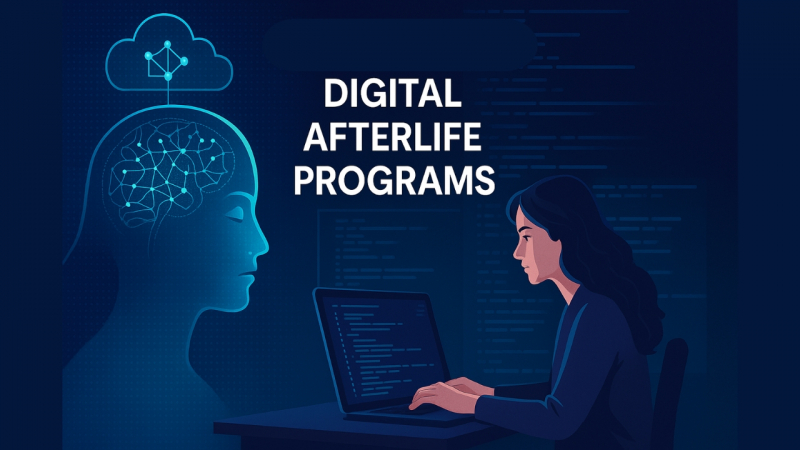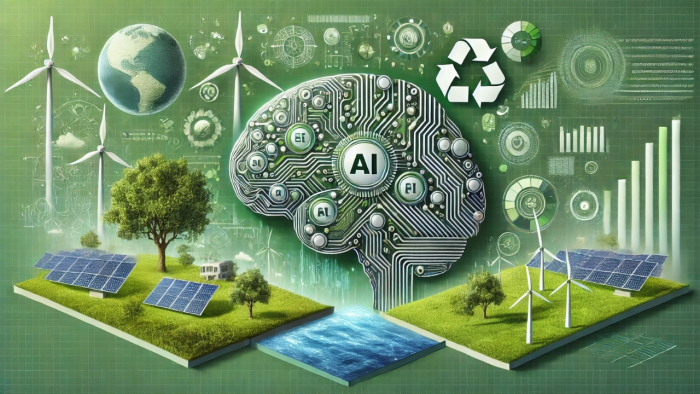Table of Content
What if death no longer meant the end of your story? For centuries, we’ve relied on religion, philosophy, and memory to answer questions about the afterlife. Now, technology introduces a radical new option: a digital afterlife. By combining neuroscience, artificial intelligence, and massive data storage, we’re exploring the possibility of AI cloud consciousness, a future where human thoughts, memories, and even personalities could live on in digital form.
The concept may sound like science fiction. Yet, AI "digital afterlife" programs and startups are already experimenting with ways to preserve human presence beyond biological death. The big question is whether we can move from storing digital traces to achieving digital immortality.
The Science Behind Mind Uploading
To understand whether a digital afterlife industry is possible, we need to ask: Can a human mind be uploaded?
The brain contains about 86 billion neurons connected by 100 trillion synapses. Each neuron stores memories and processes information through intricate chemical and electrical signals. For AI to map and replicate every neural connection in the human brain, we’d need unimaginable computing power and an exact understanding of consciousness.
Researchers at the Blue Brain Project in Switzerland are simulating sections of the mammalian brain, while the Human Connectome Project is working to chart every neural pathway. These efforts are early steps toward uploading consciousness into physical storage. Theoretically, if science could replicate every neural interaction, we could one day upload a person’s mind in its entirety; a true path to digital immortality.
But neuroscientists caution that even if we simulate a brain, we may not capture consciousness. A simulation may act like you, but it may not be you. This is where philosophy collides with technology.
Existing AI Digital Afterlife Programs
While full mind uploading is still theoretical, digital afterlife companies are already shaping this space by using digital information to create AI-generated agents as a digital legacy.
- HereAfter AI records people’s voices, stories, and values to create AI-powered avatars that can interact with loved ones.
- Replika AI allows users to build companions that mimic personality traits, sometimes modeled after deceased relatives.
Past projects like Eternime promised to preserve your entire digital footprint, turning it into an interactive self that could "live on" after death.
These projects don’t yet provide consciousness. Instead, they create AI avatars that can emulate deceased individuals using available data. It’s the concept of creating a digital representation or presence of a deceased person, often through their online activity, to interact with or be remembered by the living.
In essence, technology can now create a virtual existence for the deceased, reconstructing fragments of who they were into a persistent, interactive identity. As one discussion on Reddit’s Futurology put it, an eerie digital afterlife is no longer science fiction.

When Death Meets Data: Your Online Presence Lives On
Most of us don’t think about what happens to our digital lives when we die. But when a person dies, their digital assets don’t just poof away. Emails, photos, social media posts, financial records, and chat histories remain scattered across the internet.
This growing pool of digital memory is the raw material for AI afterlife projects. By feeding this data into algorithms, companies can build AI avatars that continue to "speak" in your voice, recall your stories, and interact with loved ones.
The digital afterlife industry sees huge potential in transforming grief into an ongoing connection. For some, speaking with an AI avatar of a lost family member can be healing. For others, it blurs uncomfortable boundaries between life and death.
AI Cloud Consciousness: Towards Digital Immortality
If memory-preserving avatars are today’s version of a digital afterlife, the next frontier is AI cloud consciousness. This is the vision where your entire mind, not just fragments, could be stored and reanimated digitally.
Think of it as backing up your brain the way you back up files. If we could fully map, encode, and upload consciousness, then technology could one day create reconstructions of dead people indistinguishable from the living.
The implications are staggering. Imagine visiting a "digital space" where people long gone exist as thinking, learning, adaptive beings. In theory, digital minds could evolve independently, gaining experiences beyond biological limits.
This possibility is why futurists like Ray Kurzweil predict a coming era of digital immortality, where death becomes less about disappearance and more about transformation into a different medium.
The Complex Ethics of a Digital Afterlife
Creating AI avatars of deceased individuals forces us to rethink ethics. Who owns the rights to your digital self? Should family members be able to "resurrect" you through AI without your permission? Could corporations exploit your AI presence for profit?
The digital afterlife industry is rapidly evolving, but legal frameworks lag far behind. Currently, most laws treat digital assets as property, not identity. This means your email, cloud storage, and online presence may be managed like a bank account, not as extensions of your consciousness.
But what happens when companies can offer to upload a person’s mind in its entirety into physical storage? Would digital selves deserve the same rights as living humans? Would deleting an AI legacy be considered a kind of "second death"?
How Digital Afterlife Changes Our Society
The rise of digital afterlife companies does more than reshape grief; it challenges how we define personhood, memory, and immortality.
- Family and mourning: Some find comfort in continuing conversations with AI legacies. Others see it as prolonging pain by refusing closure.
- Cultural shifts: Different societies may adopt or reject digital immortality depending on spiritual beliefs.
- Economic impact: An entire sector of the economy, the digital afterlife industry, is forming, offering services from legacy chatbots to AI-powered avatars stored in cloud consciousness systems.
The social consequences could be massive. Our children may grow up expecting that every person leaves behind a digital twin. Death might shift from finality to continuity in digital space.
Conclusion: A Future Written in Code
The idea of a digital afterlife is no longer distant speculation. From AI avatars that can emulate deceased individuals to visions of AI cloud consciousness, technology is already creating virtual existences for the dead.
Still, the question remains: are these digital entities truly "you," or just echoes shaped by your data? As the digital afterlife industry expands, society will have to decide whether preserving human presence in the cloud is a gift of comfort or an unsettling distortion of life and death.
Would you want your loved ones to interact with your AI-powered digital legacy after you’re gone? Or does digital immortality risk replacing memories with simulations?
One thing is certain: the boundary between life, death, and code is becoming thinner every year.
Post Comment
Be the first to post comment!


